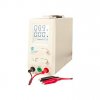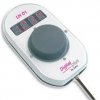Chris Vernell
45.29 N, 75.75 W
Or sockets in a chainRadial wiring is straight from the fuse board to the socket.
Or sockets in a chainRadial wiring is straight from the fuse board to the socket.
Your wires are thinner than ours already since you need 1/2 the current for the same wattage as us.
............. and is based around Mr DiversityRadial wiring is straight from the fuse board to the socket.
Ring Main is a loop via several sockets....

I thought you tended to use '110' for your small domestic appliances, and room-outlets?
Then you used (what we call) three-phase, to get '220' for big appliances, like AC and cookers?
............. and is based around Mr Diversity
You can have any number of sockets on the ring, on the basis that only a proportion can be in use at any one time (domestic wiring that is).
It also has, as its basis, one of the fundamental principals of UK mains electricity, that either by having a grid or a ring, you have a supply from both directions.
Which is why I'm a tail chaser
Well, it's something that is definitely a double edges sword, since you have to be aware of the power you are using. In the US, it's normally engineered so that everything can be on at the same time, so to speak.
The ring has a serious flaw though, if part of the ring breaks, you won't know it until you overheat the other part of the wiring if you are running near maximum load, i.e. the wiring can only handle 2/3 of the power rating if the ring is broken.
Also, how do you debug and find the break? It's just like the railroad issue, a single bad joiner in a loop of track is difficult to find.
Purely done to save money, not any other real advantage (because of the power derating).
Greg
Hm not sure that I get that still. So like a Spur from the Fuse Board with more than 1 Socket/Light etc but not looped back? Lots of Spures from 1 fuse board?Radial wiring is straight from the fuse board to the socket.
Ring Main is a loop via several sockets....
Ah, you'll have to speak to the techies, but when the 13amp ring main was introduced, it was hailed as a safety factor.Well, it's something that is definitely a double edges sword, since you have to be aware of the power you are using. In the US, it's normally engineered so that everything can be on at the same time, so to speak.
The ring has a serious flaw though, if part of the ring breaks, you won't know it until you overheat the other part of the wiring if you are running near maximum load, i.e. the wiring can only handle 2/3 of the power rating if the ring is broken.
Also, how do you debug and find the break? It's just like the railroad issue, a single bad joiner in a loop of track is difficult to find.
Purely done to save money, not any other real advantage (because of the power derating).
Greg
Purely done to save money, not any other real advantage (because of the power derating).
Greg
Aha, found an interesting Wiki page - now I know that even Wiki needs to be taken with a pinch of salt sometimes ..................Well, it's something that is definitely a double edges sword, since you have to be aware of the power you are using. In the US, it's normally engineered so that everything can be on at the same time, so to speak.
The ring has a serious flaw though, if part of the ring breaks, you won't know it until you overheat the other part of the wiring if you are running near maximum load, i.e. the wiring can only handle 2/3 of the power rating if the ring is broken.
Also, how do you debug and find the break? It's just like the railroad issue, a single bad joiner in a loop of track is difficult to find.
Purely done to save money, not any other real advantage (because of the power derating).
Greg
Disconnect both wires from the Circuit Breaker, now you can methodically debug one plug at a time disconnecting each one and using the Tewa at the end just disconnected as a test loop by joining them to test with a meter on continuity. Bit of a pain but in doing that you will more likely find the loose wire at whatever plug has broken the ring.Also, how do you debug and find the break?
Greg

One of my mains sockets is above the bath!






